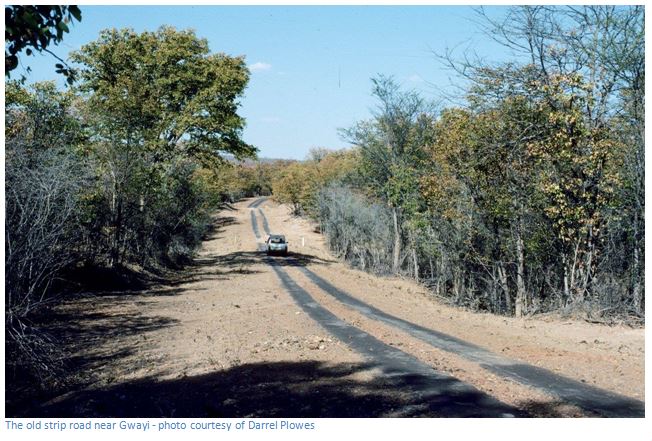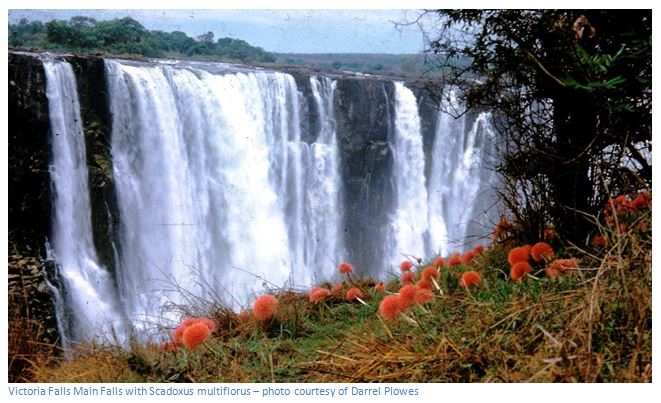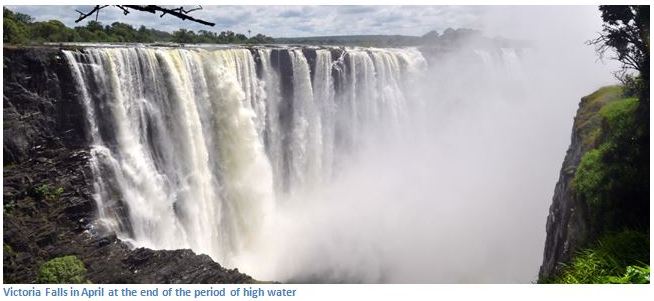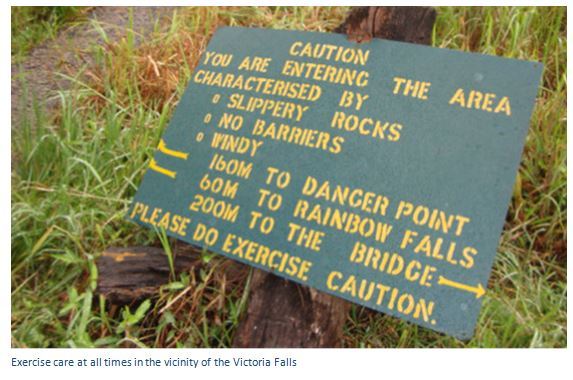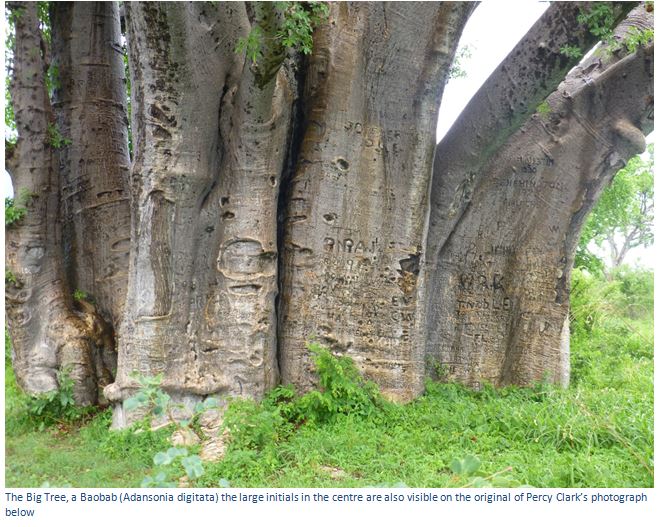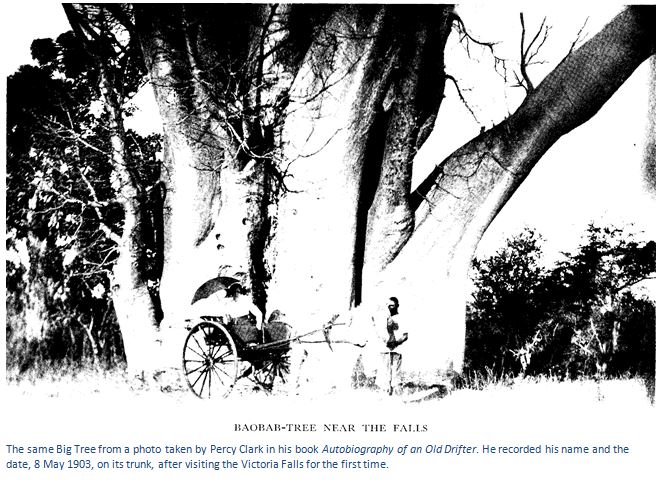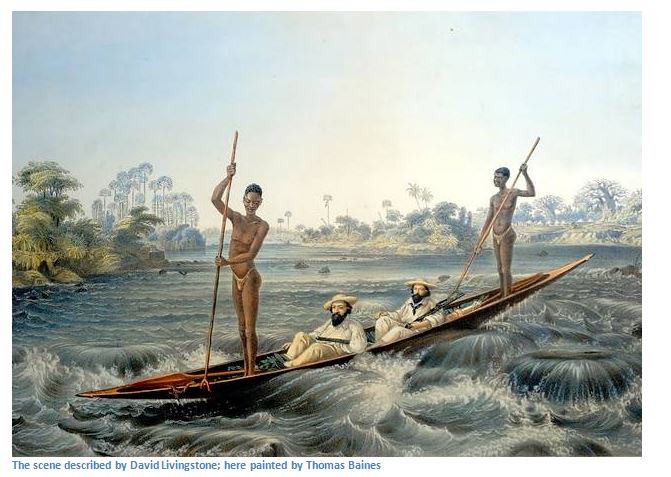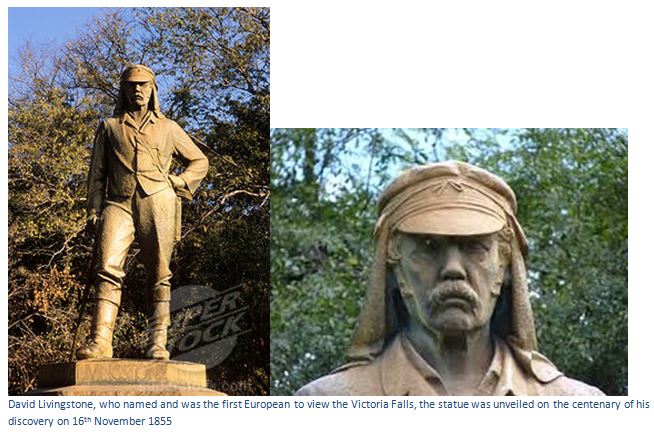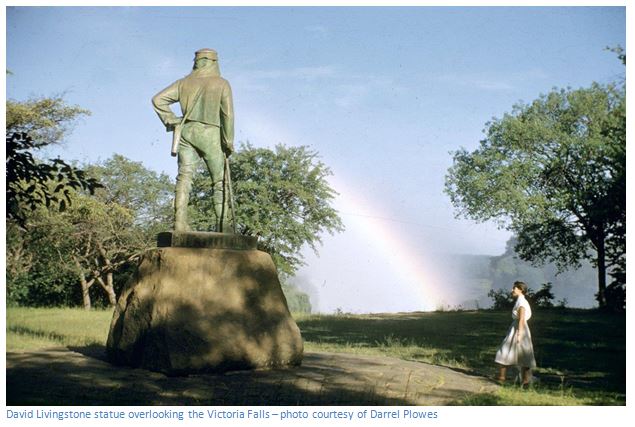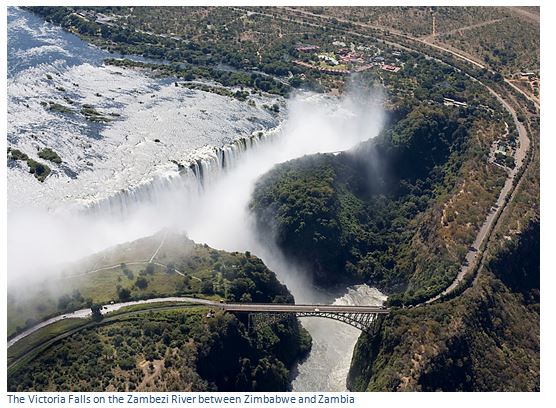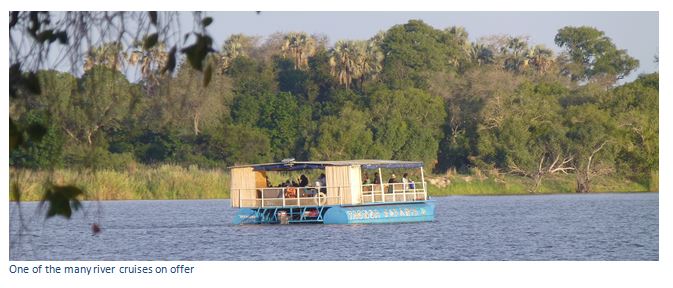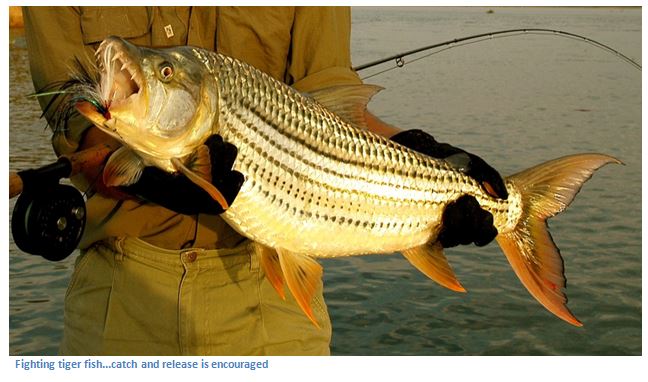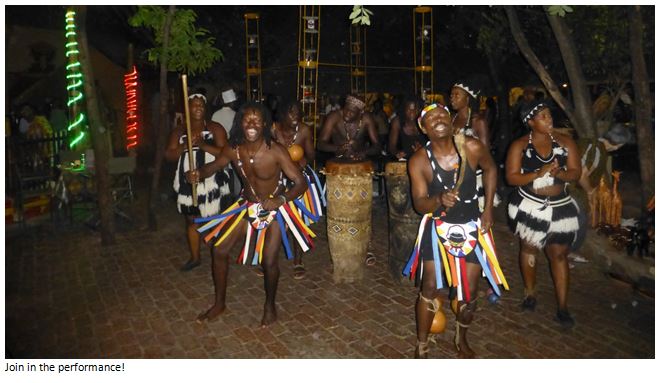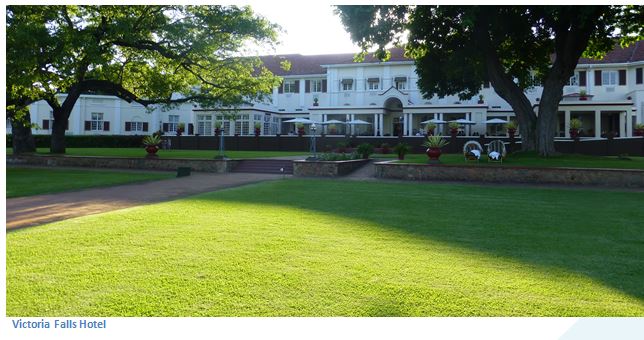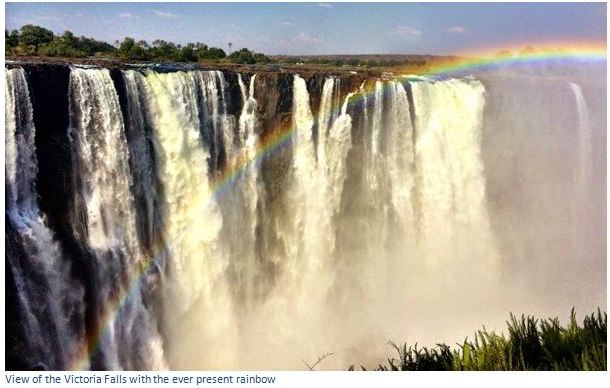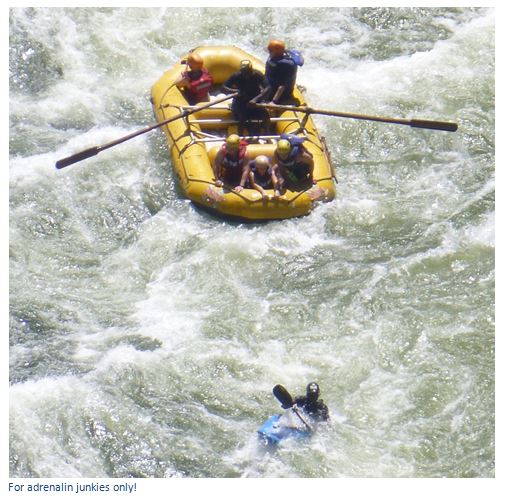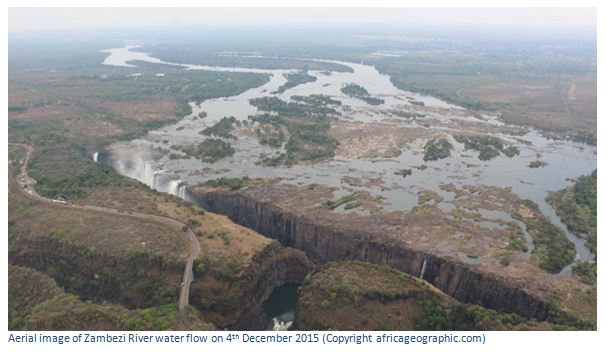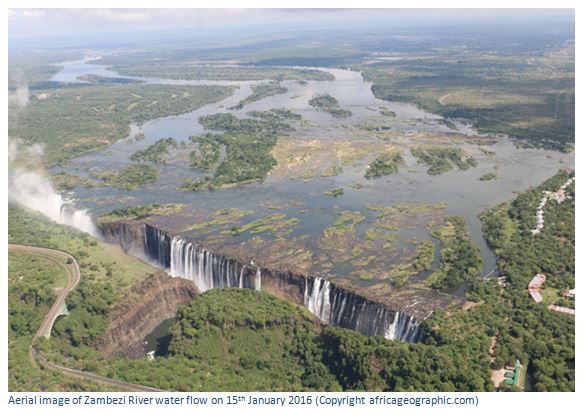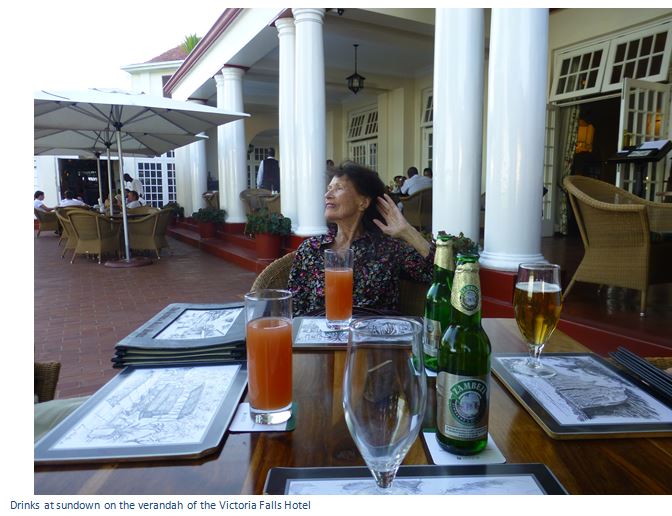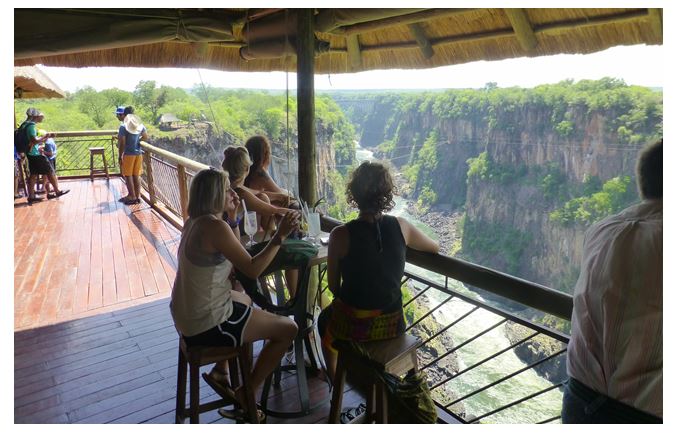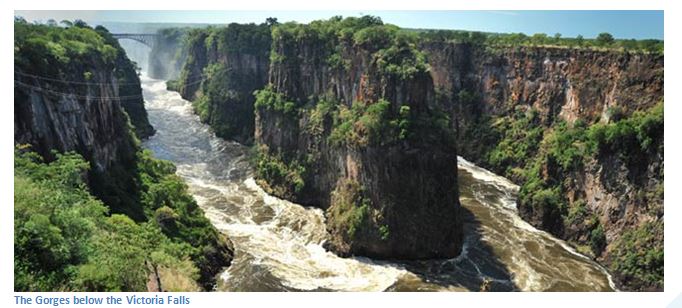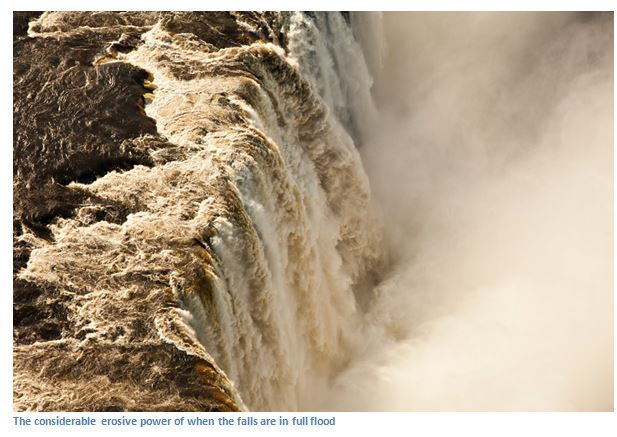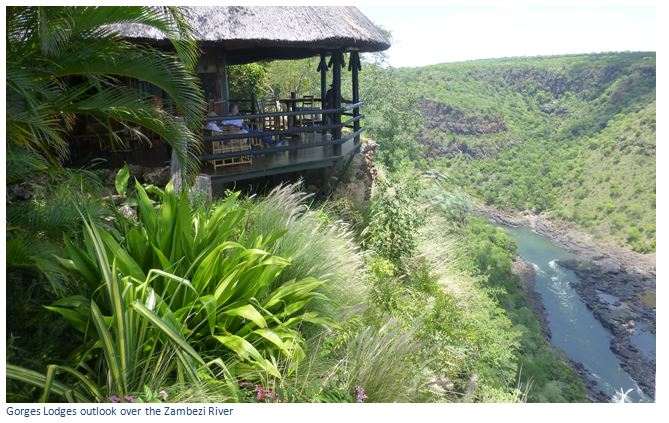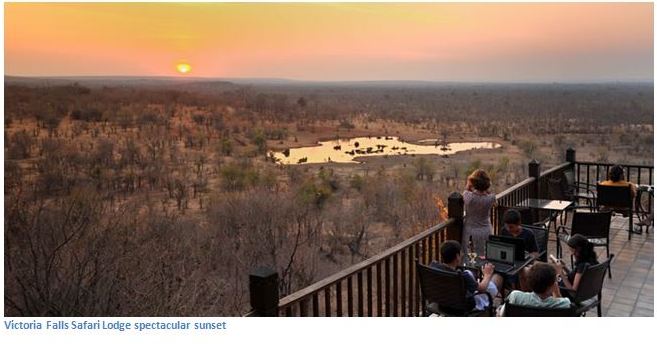Victoria Falls, a UNESCO World Heritage Natural Site
In an article in the UK's Daily Mail Travel Online the Victoria Falls were named as the top contender for the World's 10 Greatest Wonders.
Listed as one of the Seven Natural Wonders of the World and a UNESCO World Heritage Site.
One cannot really imagine touring Zimbabwe without visiting the Victoria Falls, although as a destination it feels completely cut off from the rest of the country.
The wild grandeur that David Livingstone and Thomas Baines saw in the 1850’s has been preserved as far as possible as one of the most perfect natural beauty spots in the world
Between February and May after the rainy season visitors will feel the misty clouds and hear the thunder of the mighty Falls – at this time it’s the largest curtain of falling water in the world. October and November is the end of the dry season and best for game viewing, so the choice of when to visit will depend on the kind of holiday that is anticipated.
Best seen from both the Zimbabwe and Zambian sides – get a UniVisa and cross over the borders as many times as you like within 30 days.
| Comparison of Victoria Falls with Niagara Falls | |||
| Victoria Falls | Niagara Falls | ||
| Height | Metres | 108m | 51m |
| Width | Metres | 1 ,708m | 1 ,203m |
| Mean annual flow rate: | m3/s | 1 ,088 | 2 ,406 |
| Highest recorded flow: | m3/s | 1 2,600 | 8 ,264 |
Downsides include the rip-off price charged by Zimbabwe Wildlife and Parks Authority (ZPWA) for entry into the Victoria Falls of $10 per local visitor and $30 for foreign visitors.
The Victoria Falls are on the Zambezi River with the southern bank in Zimbabwe and the northern bank in Zambia. Visitors can travel by car, driving 440 kilometres northwest from Bulawayo on a road that is fully tarred or through Kazungula Border Post with Botswana 90 kilometres to the west. The Victoria Falls border post with Zambia is at the Victoria Falls Bridge. The roads around the Victoria Falls can be negotiated by all types of vehicles. The existing Victoria Falls international airport has direct flights from Harare and Johannesburg with Air Zimbabwe offering daily flights between Harare and Victoria Flights and others via Bulawayo and Kariba. The low-cost airline Flyafrica.com also offers flights between Harare and Victoria Falls.
Although the new $150 million international airport at Victoria Falls is only due for completion in mid-2016 with a significantly enlarged capacity, the runway and new terminal building have been in use for visitors since late 2015. Some of the international airlines such as Etihad, Kenya Airways and Emirates have shown interest in launching direct flights into Victoria Falls, avoiding the need to connect via Johannesburg which will make Victoria Falls into a regional hub.
The National (A8) road from Bulawayo is generally in good condition with some bumpy parts near Bulawayo, but smooth tar thereafter.
| GPS reference: 17⁰55′29.79″S 25⁰50′49.66″E |
The Kwekwe – Lupane road shortcut
The following is from an anonymous source on Bambazonke
What most people do not know is that there are 2 roads from Nkayi to Lupane, the main (shorter)road with the broken bridge, and another which runs parallel about 12 KM north of it. This alternate route adds about 15 KM to the journey, but is in much better condition. As it runs along the Shangani River, is also more populated, with villages and homesteads along its whole length. All two wheel drive vehicles now use this road as it is passable at all times (a few occasionally flooded rivers aside). The details which follow will guide you along this road:
Kwekwe- Lupane
In Kwekwe town, traveling south, turn right to Nkayi just before the second traffic circle (it is signposted) Fuel is available at the Puma fuel station on the left, as Lupane does not always have fuel. The first 6 KM is badly broken up tar to the Green Mountain lodge, after which it improves. You come to a crossroads about 15 KM from Kwekwe, turn left to Nkayi as there are no signs. The narrow tar after the crossroads is in good condition and potholes are mostly filled. After about 40 KM of narrow tar, the road turns to corrugated gravel for about 30 KM before becoming wide tar from Silobela to Nkayi. At the Nkayi crossroads, turn right into Nkayi and follow the signs to the hospital. It will take you left past the airstrip and the hospital through the business centre. About 15 KM from Nkayi you come to a crossroads to Dakamela. Continue straight on through the crossroads for about 110 KM and it will bring you back onto the main Lupane-Nkayi road at a T junction about 20 KM from Lupane at Cross Feya General Dealer. Turn right to go to Lupane.
Lupane Total fuel station has been refurbished and is operational, but they do not take cards. If they have no fuel, you may be able to buy from CMED depot. Both roads are recognized on Garmin Nuvi map software, so once you are on the right road, it will continue to follow it.
Lupane - Kwekwe
Coming from Lupane towards Nkayi, watch for the blue store on the left called Cross Feya General Dealer, 20 KM from Lupane and turn left immediately after it. This alternative road is about 15-20 KM longer, but is in better condition than the main route, less punishing on vehicles, less isolated and one does not have to cross the river bed at the broken bridge.
Cell phone coverage:
There is Econet coverage at Kwekwe, Nkayi and Lupane, but you will lose it once you are more than 5 KM from any of these centers and there is no coverage along the road itself.
Time & distance:
Kwekwe to Nkayi is approx. 100 KM and will take around 1.5 hours. Nkayi to Lupane is approx. 120 km and will take at least 2 hours. Work on 4 hours for the whole 220 KM trip.
Although it is a shorter distance than going via Bulawayo, for most occasional travellers it is questionable if there is much advantage to taking this route.
The top ten World sites include three from Africa; Victoria Falls, the great Rift Valley in Kenya / Ethiopia and Ngorongoro Crater in Tanzania and was chosen by experts from a new book called World’s Great Wonders which reveals the top fifty must-see world wonders.
The Victoria Falls amazes all visitors for its scenic beauty and grandeur; when they step out of the rainforest at one of the lookout points they are inevitably mesmerized by the plummeting, plunging plumes of water that continuously form new patterns and shades of colour as they fall downwards; the amazing sight is reinforced by the continuous thunder of the water falling which blocks out all other sound.
At low water the fine spray is like a cooling mist on your skin, but at high water it feels like being in a violent thunderstorm that instantly soaks everything. Behind the smell of the fresh water lingers the wet, earthy scent of the rain forest.
The Falls are 1.7 kilometres wide and almost 550 million litres drop 70 to 108 metres into the chasm below every minute during high water; it makes the ground tremble and the air thick with fast rising mist makes your heart beat faster! Zimbabwe includes the Devil’s Cataract, Main Falls, Rainbow Falls and Horseshoe Falls and only the Eastern Cataract is in Zambia.
Devil’s cataract (70 metres high) on the extreme left gets its name from a nearby island on the river where supposedly local people conducted sacrifices; something considered "devilish" by the missionaries – hence the name.
Main Falls (93 metres high) occupies the central section and is where the great mass of water thundering down 93 metres into the gorge generates the greatest volume of spray.
Horseshoe Falls (95 metres high) take their name from their shape and often dries up in the dry season between October and January.
Rainbow Falls (108 metres high) are the deepest at 108 metres; a beautiful rainbow can often be seen.
The Eastern Cataract (101 metres high) are on the Zambian side. At some of the viewpoints the waterfalls are a mere 60 metres away and visitors are right on the edge looking into the chasm, other viewpoints give glimpses of the falling water through the thick, lush greenery of the rain-forest.
Cataract viewpoint is reached by descending 73 steps into the gorge, at all times extreme care is needed as the steps are invariably wet and slippery, but the viewpoint offers a completely different perspective of the Falls.
The David Livingstone statue is sited on the far left of the Falls near the Devil’s Cataract viewpoint and commemorates the fact that on 16 November 1855 he was the first European to gaze upon this sight.
The Rainforest area, that tree- covered cliff facing the Leaping Waters and the Main Falls, is nourished by all the spray generated by the falling water and the groves of mahogany, fig and date palms that create magnificent viewpoints framing the curtain of white water behind them. Edward Mohr named the Rain Forest; the local name means: “the place where the rain is born.”
The Boiling Pot is where the surging white waters collide violently before the Zambezi River surges into the first of the gorges and passes beneath the Victoria Falls Bridge and The Big Tree is a large Baobab (Adansonia digitata) 23 metres in height and 18 meters wide; the claim on the board that the baobab maybe 1,500 years old seems to err on the high side.
In early November 1855, David Livingstone, the missionary and explorer, travelled down the Zambezi River to see for himself the area the local Kololo tribe called Mosi oa Tunya- "the smoke that thunders." Approaching the spot in canoes, the party could see the columns of spray and hear the thunderous roar of water kilometres away from the falls. Livingstone says this in his book Missionary Travels and Researches in South Africa (1858): “After twenty minutes sail from Kalai [island]we came in sight, for the first time, of the columns of vapour appropriately called 'smoke,' rising at a distance of five or six miles, exactly as when large tracts of grass are burned in Africa. Five columns now arose, and, bending in the direction of the wind, they seemed placed against a low ridge covered with trees; the tops of the columns at this distance appeared to mingle with the clouds. They were white below, and higher up became dark, so as to simulate smoke very closely… When about half a mile from the falls, I left the canoe by which we had come down thus far, and embarked in a lighter one, with men well acquainted with the rapids, who, by passing
down the centre of the stream in the eddies and still places caused by many jutting rocks, brought me to an island situated in the middle of the river, and on the edge of the lip over which the water rolls. In coming hither there was danger of being swept down by the streams which rushed along on each side of the island; but the river was now low, and we sailed where it is totally impossible to go when the water is high. But, though we had reached the island, and were within a few yards of the spot, a view from which would solve the whole problem, I believe that no one could perceive where the vast body of water went; it seemed to lose itself in the earth, the opposite lip of the fissure into which it disappeared being only 80 feet distant. At least I did not comprehend it until, creeping with awe to the verge, I peered down into a large rent which had been made from bank to bank of the broad Zambesi, and saw that a stream of a thousand yards broad leaped down a hundred feet, and then became suddenly compressed into a space of fifteen or twenty yards into which the water rolls. In coming hither there was danger of being swept down by the streams which rushed along on each side of the island; but the river was now low, and we sailed where it is totally impossible to go when the water is high. But, though we had reached the island, and were within a few yards of the spot, a view from which would solve the whole problem, I believe that no one could perceive where the vast body of water went; it seemed to lose itself in the earth, the opposite lip of the fissure into which it disappeared being only 80 feet distant. At least I did not comprehend it until, creeping with awe to the verge, I peered down into a large rent which had been made from bank to bank of the broad Zambesi, and saw that a stream of a thousand yards broad leaped down a hundred feet, and then became suddenly compressed into a space of fifteen or twenty yards.”
The main flow of the river is from west to east, and its banks are generally designated northern and southern, though in actual fact at the Victoria Falls the southern bank is to the west and the northern to the east, due to a sudden bend in the river near Livingstone. A few miles south of the Falls the river bends again to the east, so that the northern and southern banks again assume their northern and southern situation.
Even in these extremely challenging years for Zimbabwe, tourists are still travelling to Victoria Falls, even if it is only on a day trip from Botswana or Zambia and visitors will hear all the languages of the world on the streets of Victoria Falls village and styles of dress that ranging from youngsters in denims and T-shirts to businessmen in their suits and ties attending a conference at the Victoria Falls.
The variety of activities visitors can indulge in has resulted in Victoria Falls being called the "Africa’s Adventure Capital" and while this maybe marketing hype; there are a wide range of exciting activities to take part in. The most adventuresome will want the adrenalin buzz of a bungee jump off the Victoria Falls Bridge, or the wild white water rafting in the Zambezi gorge below the falls, whilst others enjoy a leisurely boat trip on the Zambezi, or a sunset cruise, or try their hand at tiger fishing. Remember a sealable plastic bag for your camera, cell phone, and other electronic goodies is a must for many of the activities around the Victoria Falls.
Activities and attractions at Victoria Falls include:
Swimming and sunbathing by the hotel pool and simply soaking in the sun’s enjoyable warmth.
A day or sunset cruise on the Zambezi usually includes drinks and snacks with an option for dinner and takes tourists up the river past Siloka and Kalai islands into the Zambezi National Park where the wild animals graze on the riverbank. In the dry season, there is a good chance of seeing herds of elephants drinking and in all seasons hippos, crocodiles and many of the bird species that live here will be spotted. The sunset will often set the river ablaze in shades of orange and red. Some of these cruises include free alcoholic drinks within the ticket price, so if you do not like boisterous singing and carry-on, choose your cruise carefully.
The helicopter or microlight flight is often called the “flight of angels” and gets its name from David Livingstone who said of the Victoria Falls: "Scenes so lovely must have been gazed upon by angels in their flight." There is a choice between a 13-minute ride over the Falls area which gives passengers a true perspective of the landscape and the falls themselves, or a longer 30-minute trip that includes game viewing over Zambezi National Park.
The Zambezi River is known for its fighting tiger fish which unlike those in Lake Kariba, have to constantly swim against the strong currents and will put up a longer fight. Most boat charters encourage catch and release after the photos have been taken. Even for those not fishing being on the river is enjoyable as there is always elephant or hippo to look out for and great opportunities for bird watching. Boat hire companies usually provide an experienced river pilot, but not fishing gear.
There are a variety of canoeing packages lasting from half a day to several days. Canoeists are taken by 4X4 through the Zambezi National Park to the launch site where instructions are given, although previous canoeing experience is not required. As the canoes are drifting with the river’s current little exertion is required and paddling is mainly for steerage and to prevent the canoes drifting sideways. Canoes often lock oars and will drift silently together enjoying the sights and sounds of the birdlife. The well experienced guides will take navigate the canoes through the small rapids and keep well clear of any hippos that are encountered.
The Boma is next to the Victoria Falls Safari Lodge and offers a wide choice of salads, roasts, grilled meat, fish and even a few local exotics such as "Mopane Worms" which may not be for the squeamish! For the brave who try this local delicacy, there is a certificate to prove their courage. There is a resident Sangoma, or medicine man to consult about any tricky problems and watch the dance performances, perhaps even join in and beat a drum for a pricey, but good evening’s entertainment!
The town of Victoria Falls has shops and several world-class hotels, lodges and restaurants. Supplies of fuel, food and provisions can all be found here, as well as hospital facilities and there are many curio and craft shops to browse through offering locally made objects to suit all budgets. Elephant Walk Shopping Centre is good for strolling around and looking for some jewellery or baobab-oil beauty products; however the signage is poor and few local people seem to be aware of it. From central town, follow the road towards the Falls and turn left directly after the railway line down Adam Stander Road.
A Victoria Falls Bridge tour includes an entertaining presentation on the history of the Bridge by a local actor who plays in the part of Georges Imbault, the Chief Construction Engineer who oversaw the building of the Bridge. A walk under the bridge is exciting and visitors are provided with the necessary safety equipment, or a walk across the top of the Bridge along the pedestrian walkway can be taken, then an optional guided walk around the Visitors Centre.
Game viewing in Zambezi National Park or the Stanley and Livingstone Private Game Reserve is where visitors can see the big five and many more wild animals, but visitors must hire, or use their own vehicles for transport unless they are with a tour operator. Game Drives, Night Drives, Rhino Search & Walking Safaris are all available in these rich wildlife conservation areas which are also host to several flagship conservation programs including The Black Rhino Breeding Programme, The Nakavango Conservation Programme as well as the Anti-poaching Training Academy operated by The International Anti-Poaching Foundation (IAPF). Safaris are always accompanied by highly knowledgeable and experienced guides.
Walking is the main activity whilst marvelling at the world’s largest curtain of falling water and visitors should plan on viewing them at several different times, if they can afford it, as the ever-changing mist and light can afford spectacularly different views throughout the day – moonlight viewing in guided groups to see the lunar rainbow during periods of the full moon is popular. Don’t forget to take a raincoat to avoid getting absolutely soaked.
Wildlife Horse-Riding Safaris are designed for experienced and novice riders who get the chance to get up close to wildlife. Special attention is paid to matching the rider to the right horse so both feel at ease and Australian Stock saddles ensure a comfortable ride which starts with a full buffet breakfast; the three hour afternoon ride offers refreshments on return to the stables.
The lion encounter takes place at the Masuwe Safari Lodge where upon arrival refreshments are served and the guide will give a short introductory talk on the African Encounter Lion Rehabilitation Program and a brief on all safety aspects. Walk through the bush with young lions (part of the ALERT lion programme) They are between three months and 2.5 years old and very playful and the walks last for about 90 minutes with an experienced guide, or ride on the back of an elephant in special seats with a backrest and stirrups. Rides last about 3.5 hours and take a hat and wear sunscreen.
Take the steam train on an amazing two hour sunset trip across the Victoria Falls Bridge including drinks and snacks. Depart from the Victoria Falls Station, opposite the Victoria Falls Hotel and enjoy the ride in the luxurious lounge cars until the train stops halfway across the bridge.
High wire activities. Who said the visit had to be restful without getting out of your comfort zone? Jump off (with dual safety harnesses) the 110 metre high bridge that links Zimbabwe with Zambia on a Bungee Jump. This activity is restricted to those in good health, over 14 years and weighing less than 140 kilograms. It may not be the highest jump in the world, but it is definitely one of the most scenic. Tethered to the end of a bungee cord your heart will be beating a hole in your chest whilst experiencing 111 metres of sheer adrenalin as you plummet towards the Zambezi in four seconds of free fall at speeds of up to 120 km/hr. The Gorge Swing is a similarly, if not more, thrilling experience. You stand on a platform on the edge of a sheer 120 metre cliff, jump off and plummet into a 70 metre free fall before being cradled by a hundred metre pendulum swing. Or accelerate through the gorge at speeds of close to 100 km/h on the Zip Wire, or take a ‘leisurely meander’ across the gorge on The Flying Fox: you get clipped into a harness which is attached to a pulley which then glides along an almost horizontal cable across the gorge 125 metres above the valley floor. The most gentle of these high-wire stunts is the abseiling; you get clipped in and descend at you own pace down the side of a sheer 120 metre cliff into the gorges below the Falls. The Foofie Slide is similar to the Flying Fox, but the cable is not horizontal; it is at an extreme angle so once you let go you accelerate downhill at speeds of over 100 km/h. It is extremely exhilarating and unbelievably fast. This can be done single or tandem. It is also twice the distance as flying fox.They all look the most insane thing to do and await the hysterical screams; but expect to be on a high afterwards. These adventure activities are run by Wild Horizons (www.wildhorizons.co.za) and Shearwater (www.shearwatervictoriafalls.com)
White water rafting is one for the adventure seeker and not the faint hearted! The full day’s rafting trip starts with some leisurely class one rapids, followed by some storming class fives which seem frighteningly enormous from the water and easily induce an urge to scream in panic! It’s not uncommon for the raft to flip and fling all the occupants into the Zambezi; so there is a requirement to paddle furiously, hang on tight and feel comfortable in water. The names of the rapids range from Stairway to Heaven, The Terminator, Oblivion, The Washing Machine, Judgement Day, Devil’s Toilet Bowl and Oblivion give potential rafters an indication of what to expect! However the operators are very safety conscious and safety records are excellent. In the quiet moments as you glide between rapids you will have time to marvel at the sheer cliffs, listen to the baboons barking high above and hear the haunting cry of a fish eagle. There is a choice of a half, or full day package and there are operators on both the Zambian and Zimbabwe sides; both are very professional, the only difference being from the Zimbabwean side you need to keep some energy for the 250 metre climb out of the gorge at the other end, whilst the Zambian end has a cable lift.
There is a slight catch in timing the season correctly; too much water and it’s not possible to see the waterfall for the spray; not enough water and all the rock face is exposed. For white water rafting the lower water flow gives excellent rapids – so check the seasons! Generally the highest flow rate is in April, the lowest in November. High water runs from January to July miss out the first 10 rapids as they are just not safe to raft at the high water level and you will only do rapids 11 to 23. It is a shorter day even though it is still sold as a full days’ rafting. There are rated by some as the best one day rafting trip in the world.The two photos below from africageographic.com show how dramatically the water flow changes in just over a month.
River boarding combines river boarding and rafting so boarders swim the rapids on an oversized body board in wetsuit and with flippers and raft the rapids that are considered unsafe for river boarders. The half day version runs from January to July; the full day version only runs in low water from August to early January.
The Canopy tour lasts about 2.5 hours and is organised in groups of six to eight participants. The tour consists of 9 different slides, varying in length, the longest being 85 metres and the shortest being 40 metres and a cable bridge walkway. The network of slides, trails and rope bridge walkways are within the canopy of the hardwood forest of the Zambezi gorges and reveal amazing views of the turbulent rapids, the Victoria Falls Bridge and spray of the Falls. This experience is suitable for adventurers of all ages including families and groups. There are two guides on each tour who give a detailed safety briefing.
The Devil’s Swim and Livingstone Island tour is seasonal only from the Zambian side when the water level of the Zambezi River is low enough to allow safe access to Livingstone Island from early July to early March. The Devil’s swimming pool is available for an even shorter period as the water level has to be really low to allow for safe swimming; normally from late August to early January. Trips last about two hours and start at the Royal Livingstone hotel where visitors meet the guides and are given an introduction of what to expect and a safety talk. After a boat ride you are taken to the west of Livingstone Island overlooking Main Falls to see the water plunging over the basalt rock face into the abyss below. Expect to see an amazing rainbow if it is sunny. David Livingstone arrived here in November 1855 and lowered a length of calico with a bullet attached as a weight to measure the depth of the Falls.
Take your costume in case you pluck up the courage for the Devil’s Pool which is a deep natural pool and has a rock ledge on the lip of the Falls, where the water is only a few centimetres deep. This natural barrier is what allows you to jump into the deep pool, but not get swept over the edge.
These official Livingstone Island tours are run by Tongabezi Safaris (www.tongabezi.com) with visitors under the close supervision of trained guides. No-one has ever been swept over the Falls on these tours, but some tourists have taken unofficial and illegal trips along the crest-line of the Falls, which at low water are bare for much of the length and gives access to the various dive and swim pools along the lip and there have been fatal accidents.
A small aircraft flight matches what the birds see! Choose between a 25-minute flight, or a longer 40-minute ride that involves some game viewing in the National Park and along the Zambezi River. Due to its popularity, this activity needs to be booked well in advance.
Visiting the crocodile farm and getting a guided tour is a fun way to spend an afternoon seeing these creepy reptiles from a close distance, and for those brave enough to even hold a baby one. A percentage of young crocs are regularly returned to the river to boost wild populations.
The long established Victoria Falls Hotel is a must-visit in the area even if it is just to walk straight into the grounds and enjoy the view over the Victoria Falls Bridge from the scenic verandah whilst having high tea, or drinks at sundown.
There is plenty of choice for eating out from the elegance of the Livingstone Room, or Illala Lodge hotel, both decorated to suggest they are colonial relics, or the African-themed Jungle Junction, Shoestrings Café or Rainforest Café, Mama Africa Eating House and River Cafe are worth a visit.
There are some local bars around like the Boat Club and Hunters, or back at most of the hotels, the Spray-View, Elephant Hills, A’Zambezi, Drifters, Rainbow, Stanley & Livingstone, Victoria Falls Safari Lodge, or Illala Lodge. For something more up market head to the Kingdom for its casino and good food.
Lookout café is good for a coffee or a drink as it offers excellent views over the Zambezi gorges and the white water rafters as they journey down the river. It gets pretty booked up for lunches so book early if you want a table.
The Jameson Vic Falls Carnival is becoming well-known as an awesome countdown to New Year and is an opportunity to party into the New Year like nowhere else on earth with well-known music artists and enjoy all the great adventures above in the setting of the spectacular Victoria Falls.
The geology of the Victoria Falls is complicated and when David Livingstone saw and named the Victoria Falls for the first time in November 1855 he believed the site of the falls was the result of a crack in the basaltic rock and saw no reason to change his mind when he revisited five years later. Edward Mohr reached the Falls in 1870; he believed that a violent convulsion of the earth's crust must have created the strange scenery at this spot and for fifty years this explanation was accepted by all the travellers who saw the Falls.
In 1905 after studying the geology of the country surrounding the Victoria Falls which are low hills of Kalahari sand overlying a wide sheet of basalt, which is really a succession of lava flows, AJC Molyneux suggested there was another reason other than a sudden rending of the earth's surface responsible; saying that it was the relentless energy of the moving water which eroded weaknesses in the hard igneous rock and created the whole combination of canyon, gorge, chasm and waterfalls.
Later geologists including Neville Jones elaborated the theory saying the Kalahari sand was accumulated during a desert period, lasting through part of the Tertiary which spread over northern and western Zimbabwe and most of Botswana. At the end of the Tertiary Period the climate became more humid, the desert area shrank and rivers began to flow. Between the Gonye Falls, 280 kilometres northwest and the Gwai River 112 kilometres east of the Victoria Falls, the Zambezi eroded away the Kalahari sand and began to flow over the very thick horizontal sheets of basalt, which offering greater resistance to erosion, created the waterfalls. East of the Gwai River are relatively soft and easily eroded sandstones and shales of the Karoo system which were easily eroded into the wide and deep Zambezi valley.
This erosion process, which continues today, was greatly facilitated by a series of shrinkage cracks, or master-joints, due to the shrinkage of the basalt on cooling, across the path of the Zambesi and
these determined the direction of the Victoria Falls gorge and the remarkable series of zig-zags. The waters continue to cut back and although there is little difference between the scenes that Thomas Baines painted in the twelve days after reaching the Victoria Falls on the 23rd July 1862 with his companion James Chapman and what we see today, aerial photos of the area above the Victoria Falls reveal the same cracks in the basalt that will determine the direction in which future gorges will be formed. The existing line of waterfalls will in time become another gorge.
Victoria Falls is the only place in Zimbabwe which affords evidence of almost continuous human occupation from the earliest times and few parts of the country are as rich in history. Stone Age sites along the banks of the Zambezi close to the Falls and various tributaries have yielded ancient stone tools and implements in quite abundant quantities where the original tool factory sites have been revealed by excavation, or by the erosion of a stream.
For background on The Victoria Falls Bridge see the separate article.
Soon after the bridge was opened, Percy Clark, one of the earliest and well-known residents of Victoria Falls, proposed a rickshaw service and then a rail-trolley service from the Victoria Falls Hotel to the Victoria Falls. Both his suggestions were taken up the Victoria Falls Hotel and Clark lost out to big business. In 1920, a two-foot-gauge track was laid from the hotel and guests were pushed by trolley down to the rainforest and Devil's Cataract, or to the old boathouse for river cruises on the Zambezi River for a fare of a shilling each way. One of these trolleys is preserved in the courtyard of the Victoria Falls Hotel; another in the Bulawayo Railway Museum. They are basically garden seats back to back under a striped canvas awning carrying eight people which ran downhill to the Victoria Falls by gravity and were pushed uphill back to the hotel by two men per trolley. Telephone boxes were installed at either end so that a trolley could be summoned when required and they proved immensely popular running for 37 years and carrying more than two million passengers.
Most visitors cross to Zambia and a little known fact is that the Old Drift across the Zambezi is Zambia’s oldest town. It is found at the end of Livingstone Road in the Musi-oa-Tunya National Park, its most obvious landmark being the Old Drift Cemetery that dates back to the late 1890's and is a national monument. At this point the river is less than a kilometre across and a ferry took passengers across the river and traders such as Percy Clarke settled at this point. By 1902, Old Drift had at least 25 residents, who were predominantly male and entertainment centred on Clarke's bar. But the site was extremely unhealthy and many died of Black Water fever and malaria. Some of the names on the twenty-two graves are known, but the majority are now unknown as all the records have been lost.
The Victoria Falls Anti-Poaching Unit (VFAPU) which is privately funded through donations but works closely with Zimbabwe Parks and Wildlife Management Authority (ZPWMA) and Zimbabwe Republic Police employs seventeen scouts to actively patrol the Victoria Falls area and recovers many snares and apprehended nearly 400 persons in 2014. With help from the Victoria Falls Wildlife Trust a number of injured animals including kudu, buffalo and warthogs, were darted, treated for their wounds and released back into the wild. Sadly, nineteen animals were found poached in 2014, including five elephants from cyanide poisoning.
There is a wide selection of accommodation at Victoria Falls from luxury five stars to backpackers’ hostels.
Zambezi Sands River Camp (www.imvelosafarilodges.com) accommodation is situated within the Zambezi National park and consists of eight Bedouin-style double or twin luxury tents built along the river bank on raised wooden platforms at the water’s edge, each with its own splash pool and a four-bed family suite. The centrally-located main camp consists of a dining room, lounge and bar, with a shaded outdoor deck for alfresco dining experiences looking out over the river.
Gorges Lodge (www.imvelosafarilodges.com) is built on the edge of the Batoka Gorge, some 200 metres above the mighty Zambezi River, yet is just 30 minute driving from Victoria Falls town. The main lodge is built on a stilted decking of indigenous hard wood and has a lounge, dining room and bar with extraordinary views right over the gorge into Zambia. The accommodation comprises ten stone under thatch chalets all with en suite bathrooms with showers, minibars, overhead fans and tea and coffee making facilities and private verandas that provide stunning views. Guests each receive one free return town transfer per paying night. Concession fees and royalties are paid to local village communities which help them to improve schools, domestic water supplies and clinics.
From the banks of the Zambezi River at the Victoria Falls River Lodge (www.victoriafallsriverlodge.com) visitors can see the spray from the Victoria Falls and set within the 150,000 acres that make up the Zambezi National Park it feels like a real African Safari experience. The main lodge has an open plan design and has been positioned so visitors can sit back and sip on a cocktail under the shade of the thatched roof and watch the elephants on the river bank. Their spacious luxury tents have larger than king size bed, a freestanding bath and comfortable sitting area, indoor and outdoor shower and a private viewing deck.
Set high on a plateau the Victoria Falls Safari Lodge (www.victoria-falls-safari-lodge.com) enjoys wide views over unspoilt Bushveld and an on-site waterhole and spectacular African sunsets. Their complimentary shuttle service transports guests to the Victoria Falls and town centre hourly throughout the day. The Lodge has 72 en-suite standard, deluxe and King suite bedrooms each with a bath and shower and private deck to enjoy watching the wildlife, or to see the sun sink below the horizon. All rooms have digital safes, IDD phones, remote control air conditioning, hairdryers, fans, mosquito nets and complimentary tea and coffee making facilities.
Situated on a private concession within the Victoria Falls National Park and bounded by the Masuwe River and the spectacular Zambezi gorges which separate Zimbabwe and Zambia, The Elephant Camp (www.theelephantcamp.com) has views of the Victoria Falls’ spray. The Elephant Camp is a luxury lodge under canvas within easy reach of Victoria Falls offering exclusive accommodation for 24 guests in 12 luxury tents with a private viewing deck, plunge pool and private lounge area. The suites are equipped with air-conditioning & ceiling fans, an inside and outside shower as well as a bath with a view and a well-stocked mini bar and tea/coffee stations ensure small comforts for guests whilst in their suite.
Imbabala Zambezi Safari Lodge (www.imbabalazambezisafarilodge.com) is sited on the Zambezi River where the borders of Zimbabwe, Botswana, Zambia and Namibia converge 70 kilometres west of Victoria Falls with access by transfer from Victoria Falls, Livingstone or Kasane. The Lodge offers amazing game viewing and bird watching within a private National Parks concession of over 2,000 hectares and fourteen kilometres of private Zambezi river frontage. The main lodge consists of a thatched lounge, dining room and bar area with views over the river and a nearby waterhole; accommodation is for only 20 guests in nine individual stone and thatch lodges with en-suite facilities and verandas opening onto sweeping views of the Zambezi River and one family lodge which sleeps four guests.
Lokuthula Lodges comprise thirty-one two-bedroomed and three-bedroomed self-catering lodges styled in an African fashion and surrounded by beautiful gardens and a three-tiered pool, bar and their Boma restaurant where delicious African inspired meals are served in the traditional manner and are a big draw card for visitors seeking an authentic experience. Lokuthula is one of the most popular resorts in the area and it’s largely due to its efficient staff and great location close to Victoria Falls town.
Pioneers Camp (www.wildfrontiers.com) in the Zambezi National Park, located close to Victoria Falls is a luxury permanent camp located on a quiet stretch of the Zambezi which attracts an abundance of wildlife throughout the year and visitors can enjoy fishing, canoeing, bird-watching, sunset cruises as well as guided walks along the Mpala Jena spring line, or easily go into Vic Falls town. The camp has just six en-suite luxury tents with river views under shady trees with a central dining and lounge area to relax in. The camp modern solar lighting and eco-friendly waste disposal.
Chundu Island (www.chunduisland.com) is located on an island in the Zambezi River, 21 kilometres upstream from the Victoria Falls and forms part of the Zambezi National Park with fantastic birding and wildlife experiences both on the island and on the mainland. Transfers from Victoria Falls town take an hour to an hour and a half and guests are then transferred onto a boat for a short trip across the river to the island. Six tented rooms built on wooden platforms line the river bank are each equipped with twin beds, fans and a large en suite bathroom with an outdoor rustic shower under the shade of some of the island’s most magnificent trees and has its own private deck of the Zambezi River. The dining, lounge and bar area are a short walk from each room on a wide deck with a fire pit nestled in the middle where in the evenings guests enjoy the sounds of the bush and the blanket of stars overhead.
Stanley & Livingstone Safari Lodge (www.stanleyandlivingstone.com) and Old Ursula Camp (www.oldursula.com) are within a 2,400 hectare private game reserve close to Victoria Falls town. The Stanley and Livingstone Safari Lodge have sixteen private suites overlooking the Game Reserve, and conference facilities for twelve delegates. Ursula's Camp has four chalets and offers Full Board, Half Board, Bed & Breakfast and Self-Catering options. The varied activities include: morning and evening game drives, walking safaris, rhino encounters, birding and night drives.

